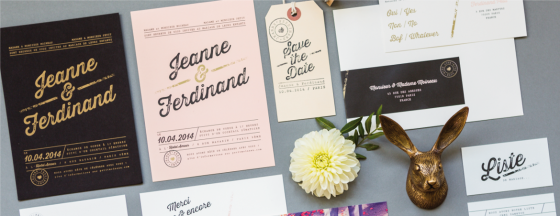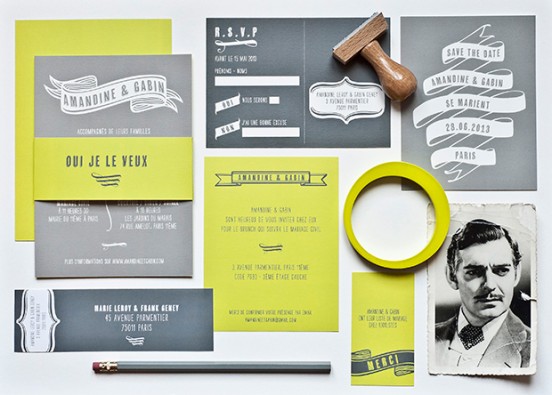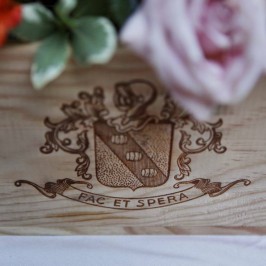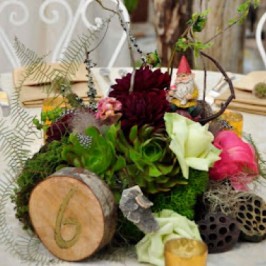I fell in love with Mister M. Checking out who this mysterious person is I found out he is a girl. Now I love Misses M, cause her work is so awe!
Sarah Livescault lived in New York for a couple of years, accumulated a bunch of inspirations and moved to Paris, creating one of the coolest stationery shops around. She offers everything from invites over stamps to table numbers, menus and seating charts. And, if you are as excited about everything paper design as I am and are not into cutting down trees, there are countless materials paper can be made of:
- Post-Consumer Waste. “Post-consumer waste” is the paper you throw out or recycle. It also keeps paper out of landfills and uses 60% less energy to be produced.
- Hemp. Hemp produces its own natural pesticide, and grows so quickly it produces twice as much fiber per acre as pine. It was finally allowed a couple years ago, as we can’t smoke it!
- Kenaf. Kenaf uses 15-25% less energy than pine to make pulp.
- Bamboo. This fast-growing grass produces 4 to 5 times the fiber of the fastest-growing commercial tree species.
- Agri-Pulp. Agri-pulp combines agricultural waste along with post-consumer waste to make paper.
- Cotton. Organically grown cotton that grows in several colors, including green, brown, and white. Not my favorite option as there is a bunch of controversy around cotton.
- Elephant poop. Really. It’s saner than it sounds. The process of making poo paper involves a series of sterilizations, washing, and processing until fibers are left over to create paper.
- Also banana, tobacco, citrus, coffee bean leaves and bagasse, a fibrous matter that remains after sugarcane or sorghum stalks are crushed to extract their juice. It is also used as a bio fuel.

















